Have you ever caught your pet doing something and thought, “Wow, that was so considerate!”? Well, it turns out animals might have their own version of what we call morality. Sure, they don’t have a written code or a set of commandments, but their actions sometimes speak volumes. From helping their friends to showing empathy, animals display behaviors that suggest they have a sense of right and wrong. So, let’s dive into some intriguing examples of our furry and feathered friends playing by rules that are remarkably human-like.
1. Elephants Showing Empathy

Elephants are renowned for their impressive memories, but did you know they are also incredibly empathetic? When one elephant is in distress, others will quickly come to its aid. They display this behavior by using their trunks to touch and comfort a fellow elephant in need. In a study by Dr. Joshua Plotnik, it was observed that elephants would often try to console an agitated peer by making soothing noises. This behavior suggests that elephants not only feel empathy but also understand when others are upset and take action to provide comfort.
Watching elephants interact in this way can be quite heartwarming. It’s like watching a group of friends rally around someone going through a tough time. This level of empathy and support indicates that elephants might share a moral compass similar to ours. Even in the wild, where survival of the fittest often rules, these gentle giants remind us of the power of compassion. So, next time you see an elephant, remember that it might just have a heart as big as its body.
2. Dogs Displaying Fair Play
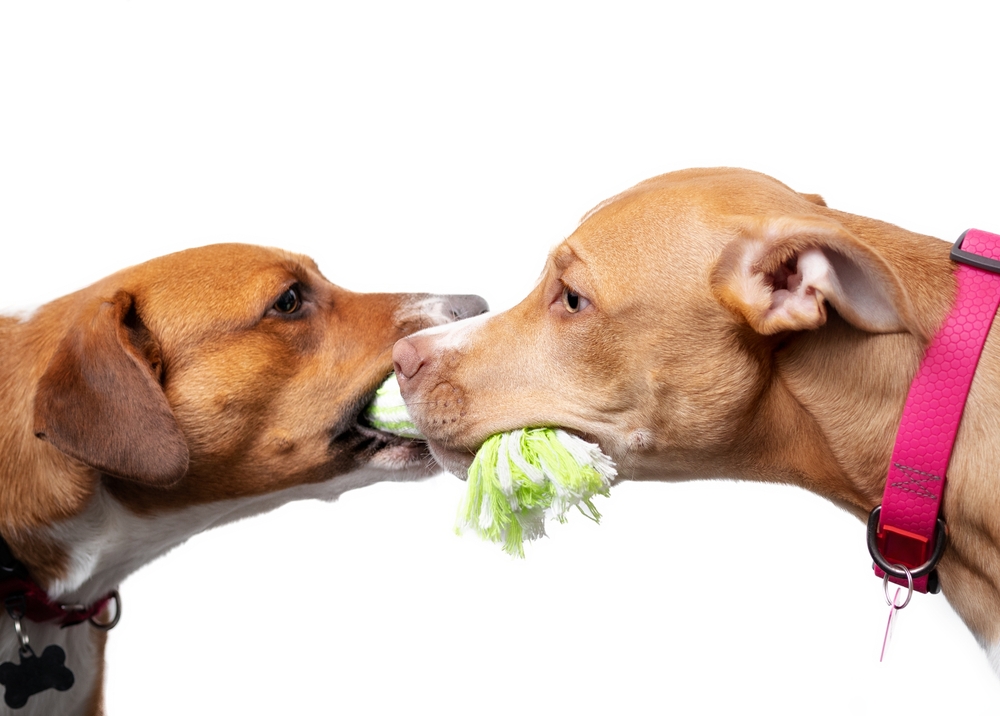
If you’ve ever seen dogs play together, you’ll notice they follow certain unwritten rules. Dogs seem to understand the concept of fair play, taking turns, and adjusting their strength to match their playmate. This behavior ensures that playtime is enjoyable for all parties involved, preventing any real harm. When one dog gets too rough, the other may protest, and usually, the rough player will tone it down. This behavior is a form of self-regulation and shows that dogs value fairness.
Fair play is not just about having fun; it’s also a way to build trust and maintain social bonds. If a dog is too aggressive, it risks being shunned by the group, which is a big deal in the dog world. By playing fair, dogs are not only showing morality but also understanding the importance of community and cooperation. Next time you see dogs at the park, notice how they communicate and respect each other’s limits. They could teach humans a thing or two about playing nice.
3. Dolphins Displaying Altruism
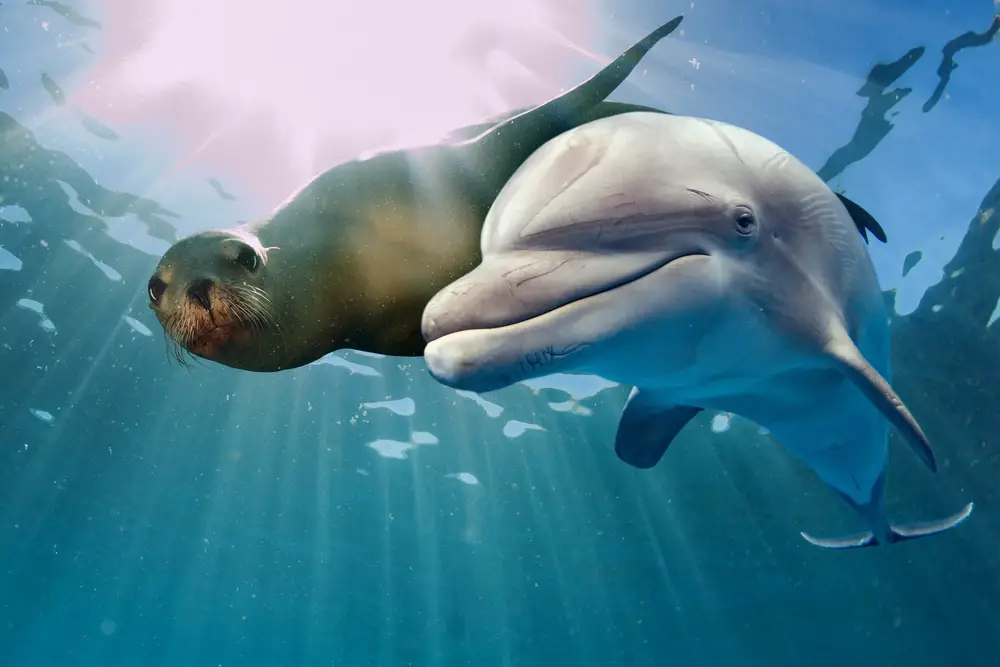
Dolphins are known for their intelligence, but they’re also recognized for their altruistic behavior. These marine mammals have been observed helping injured pod members reach the surface to breathe. It’s not just their own kind they assist; dolphins have been known to help humans and other animals in distress, too. In one documented case by marine biologist Dr. Diana Reiss, dolphins protected a group of divers from a shark by circling around them. Such acts of selflessness showcase a sophisticated level of moral behavior in dolphins.
This altruistic nature isn’t just a one-off event; it’s a consistent pattern seen in dolphin communities. They seem to understand the importance of looking out for one another, regardless of species. This behavior strengthens their social bonds and ensures the group’s overall well-being. Dolphins’ willingness to help indicates an understanding of kindness and morality that goes beyond personal gain. Observing dolphins in action can be a powerful reminder of the good that can come from looking out for others.
4. Crows Honoring Their Dead
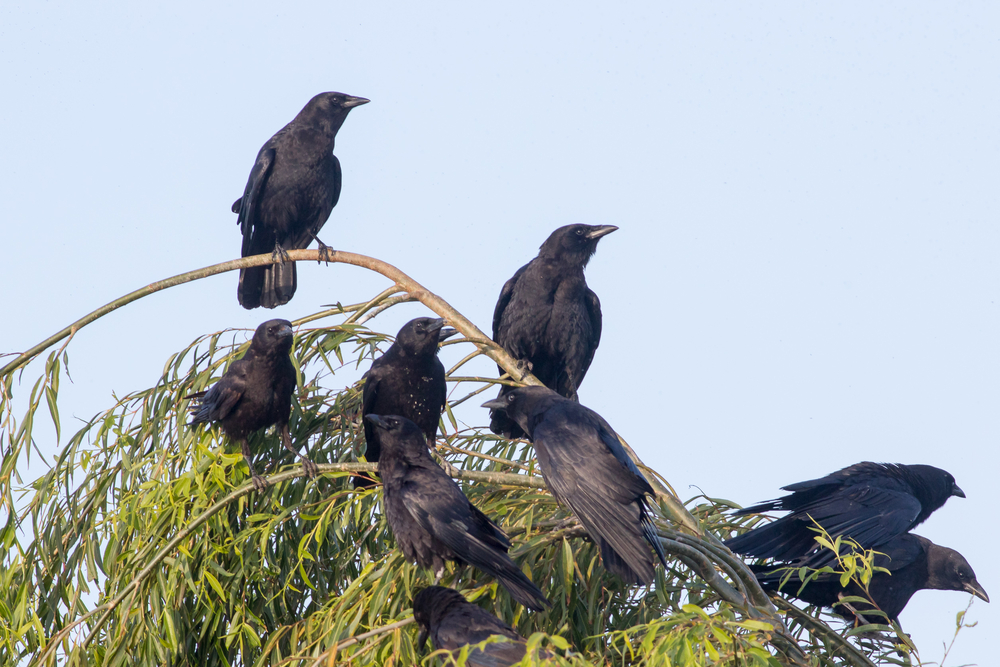
Crows have a reputation for being clever, but they’re also quite sentimental. When a crow dies, others often gather around the deceased in what appears to be a mourning ritual. This gathering is known as a “crow funeral,” and it serves multiple purposes. It’s not only a moment to grieve but also an opportunity to learn about potential threats in the area. By examining their fallen comrade, crows can gain valuable insights into dangers and adjust their behavior accordingly.
This behavior suggests that crows have a sense of community and care for their own. It’s as if they understand the importance of acknowledging the life and loss of a group member. This act of honoring their dead reflects a deep social connection and respect among crows. Such rituals show that even in the animal kingdom, there are customs and behaviors that parallel human traditions. The next time you see a crow, remember that these birds might just have more in common with us than you might think.
5. Bonobos Sharing Food

Bonobos are often regarded as one of the most peaceful primates, and their tendency to share food plays a big part in this reputation. Unlike some animals that hoard resources, bonobos are known to share their bounty with others, even those outside their immediate family. This behavior is not driven by necessity but by a choice to foster goodwill within their community. Research by Dr. Brian Hare highlights that bonobos sharing food reduces tension and promotes social bonding. It demonstrates an understanding of reciprocity and fairness.
Sharing food is a powerful way to create and maintain social ties. For bonobos, it’s not just about the food itself but the act of sharing that strengthens their relationships. This willingness to share reflects a sense of morality based on cooperation and mutual benefit. Watching bonobos share their meals can make you rethink how important it is to look out for one another. They remind us that sometimes, sharing a meal can be about more than just satisfying hunger.
6. Bees Enforcing Hive Justice
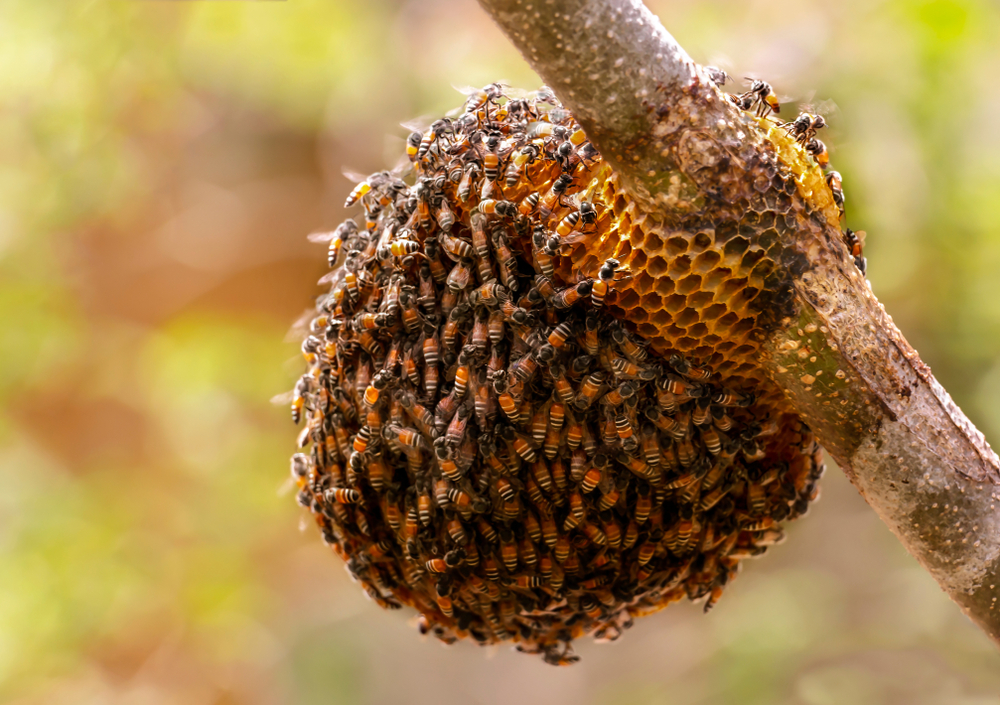
In the world of bees, maintaining order is crucial for the hive’s survival. When a worker bee becomes too aggressive or fails to perform its duties, others will step in to rectify the situation. This behavior is often called “hive justice,” where deviant bees are punished or even expelled to maintain harmony. It’s a fascinating way to see moral behavior at play in a community that prioritizes the greater good. By enforcing these rules, bees ensure that everyone in the hive acts in a way that benefits the colony.
This social structure is critical for the hive’s success and longevity. Each bee understands its role and the importance of adhering to the hive’s rules. By keeping each other in check, bees create an environment that fosters cooperation and productivity. It’s a remarkable system of accountability that highlights the importance of collective responsibility. Even in the busy world of bees, there’s a clear code of conduct that keeps everything running smoothly.
7. Rats Displaying Empathy
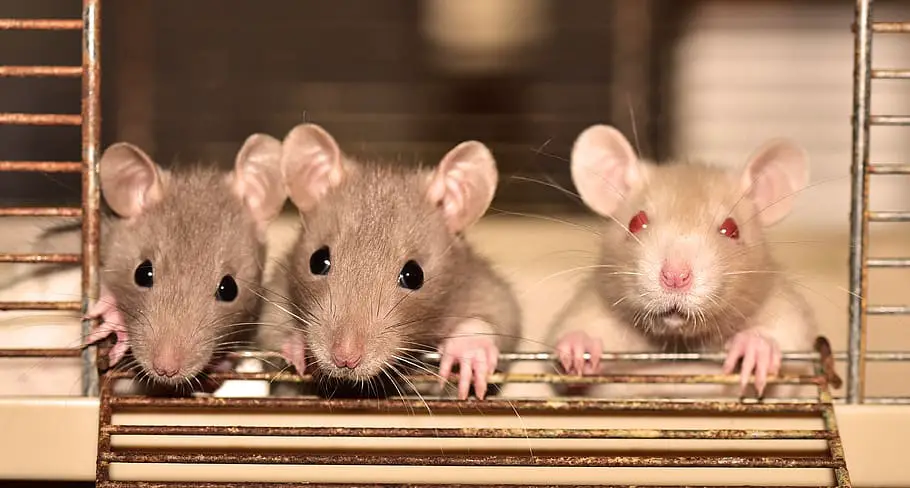
Rats might not be the first animals that come to mind when you think of empathy, but research suggests they have a strong sense of it. In a study led by Dr. Peggy Mason from the University of Chicago, rats were observed freeing their trapped peers, even when there was no immediate benefit to themselves. This behavior indicates that rats are capable of understanding when another is in distress and are willing to help. The study showed that rats would choose to help their friends before even accessing food treats, demonstrating a selfless act of empathy.
This kind of behavior challenges the stereotype that rats are solely self-serving creatures. It indicates a level of social awareness and concern that is surprisingly complex. By helping their trapped peers, rats show that empathy isn’t just a trait reserved for humans or larger mammals. The next time you see a rat, consider that these creatures might have a deeper sense of morality than previously thought. They remind us that empathy can be found in the most unexpected places.
8. Wolves Protecting The Pack
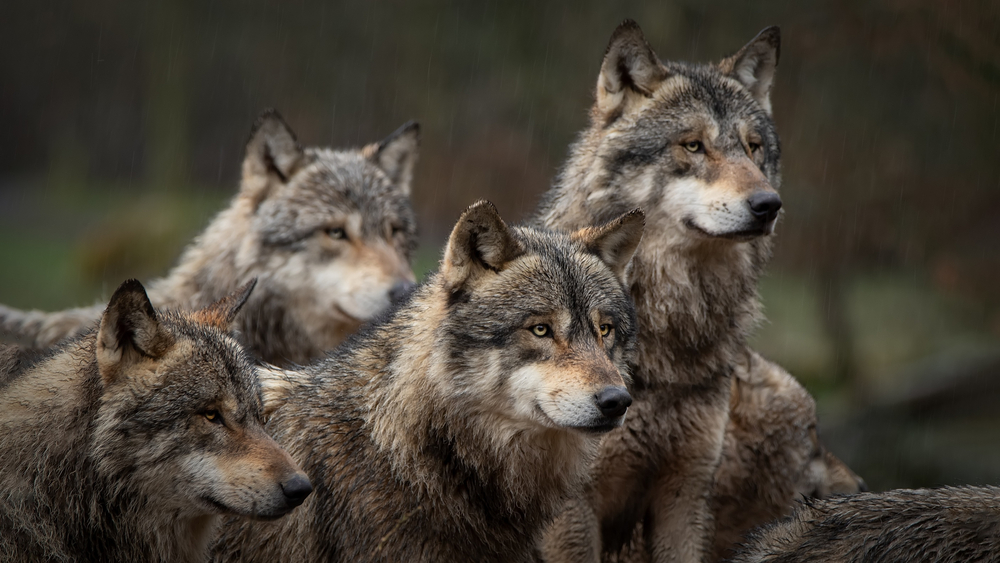
Wolves are known for their strong social bonds and pack mentality. Each member of the pack has a role, and they work together to ensure the group’s survival. When one member is threatened or injured, others will rally to protect or assist it. This behavior shows a deep understanding of loyalty and the importance of group cohesion. Wolves understand that their strength lies in their unity, and this collective responsibility is a testament to their moral framework.
The pack’s hierarchical structure ensures that each wolf knows its place and duties. This organization helps maintain order and reduces conflicts within the group. By looking out for each other, wolves can better navigate the challenges of the wild. Their protective behavior highlights the value they place on community and mutual support. Observing wolves in their natural habitat can teach us a lot about the power of teamwork and shared responsibility.
9. Cats Showing Grief

Cats often have a reputation for being aloof and independent, but they’re also capable of deep emotional connections. When a cat loses a companion, whether human or feline, it can exhibit signs of grief. This might include changes in behavior, such as reduced appetite or increased vocalization. Cats have been known to search for their lost friends, indicating an awareness of absence and loss. This grief response shows that cats form strong bonds and experience a range of emotions.
Grieving cats can be quite touching to witness, as they navigate their feelings much like humans do. It’s a reminder that even animals with a seemingly solitary nature can experience profound emotional connections. Understanding this grief can help us better support our pets during difficult times. Cats’ ability to mourn suggests a depth of feeling that aligns with a sense of morality. It challenges us to reconsider how we perceive their emotional lives.
10. Primates Mediating Conflicts
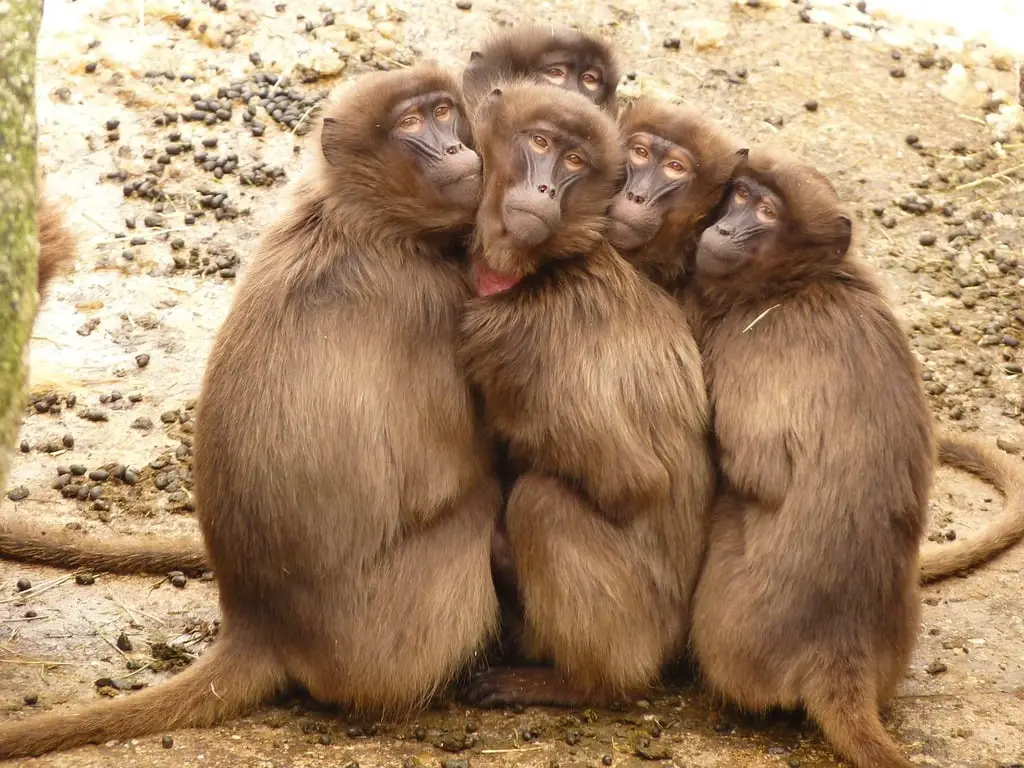
Primates, especially those living in social groups, often have mechanisms for resolving disputes. When tensions arise, certain individuals, often older and more experienced, step in to mediate and calm the situation. This behavior helps prevent conflicts from escalating and maintains group harmony. In some primate communities, grooming sessions are used to patch up disagreements, serving both as a peace offering and a bonding experience. These actions illustrate a sophisticated understanding of conflict resolution and social harmony.
Mediation in primate groups highlights the importance of peacekeeping for communal living. It shows that they value group cohesion and understand the benefits of resolving disputes amicably. This behavior parallels human efforts to maintain peace through dialogue and compromise. Observing these primates can offer insights into the universality of conflict resolution. It’s fascinating to see how much we share with our primate relatives in handling disagreements.
11. Birds Warning Of Danger
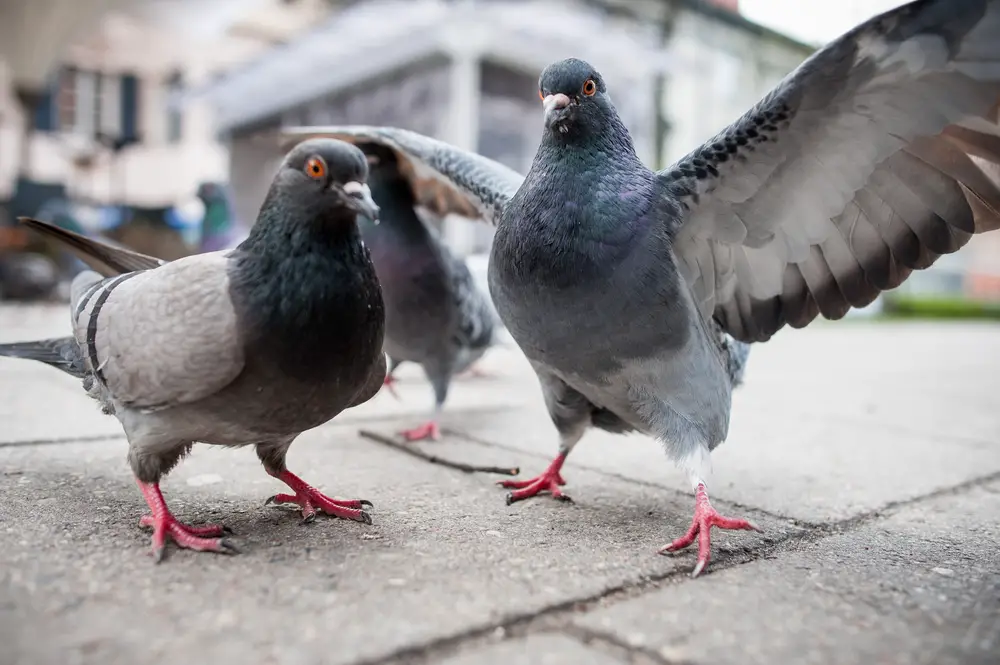
Many bird species have developed sophisticated alarm systems to warn others of predators. When a threat is detected, birds will sound the alarm, alerting others in the vicinity to take cover. This behavior demonstrates a sense of community and responsibility, as they’re looking out for more than just themselves. By warning others, they increase the chances of survival for the entire group. It’s a selfless act that reflects an understanding of the importance of collective safety.
Alarm calls in birds are an example of how communication can be used for the greater good. These warnings help maintain the balance within ecosystems by keeping populations safe from predators. The fact that birds take on the role of sentinel shows a level of moral consideration for their fellow creatures. Their vigilance and willingness to share information reflect a deep-seated instinct for protecting their community. Next time you hear birds chirping frantically, consider that they might be sounding the alarm for the greater good.
12. Orcas Teaching Hunting Techniques
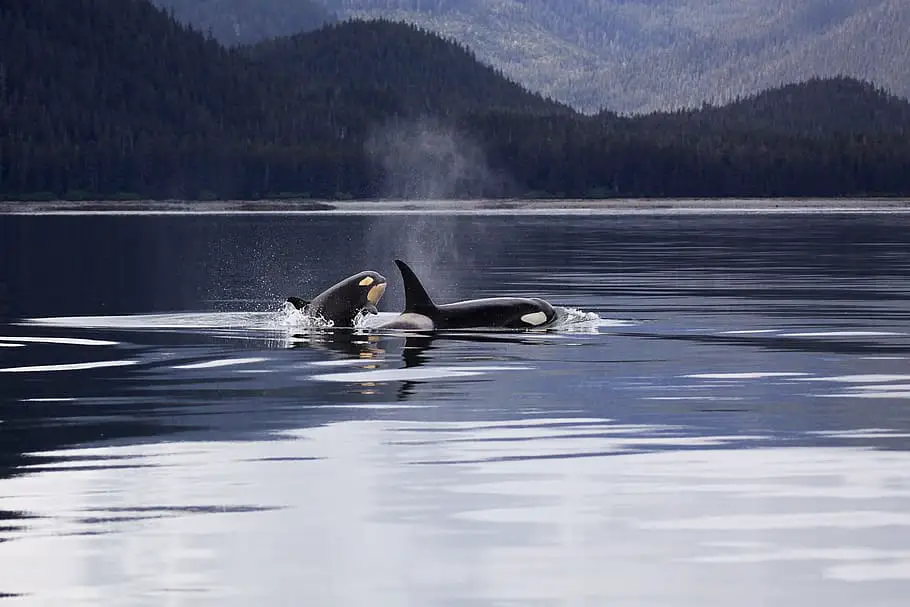
Orcas, or killer whales, are among the top predators in the ocean, and they use their intelligence to teach hunting techniques to younger pod members. This behavior is not just about ensuring survival but also about passing on knowledge and cultural practices. By teaching the next generation, orcas demonstrate an understanding of legacy and education. It’s a form of mentorship that highlights the importance of community learning and shared skills. These teaching moments show a moral obligation to equip the young with the tools they need to thrive.
The mentorship of orcas is a powerful reminder of the importance of education and knowledge transfer. It ensures that crucial skills and techniques are not lost but rather refined and adapted over time. This behavior underscores the value orcas place on collaboration and communal living. Observing these majestic creatures in their teaching roles can be inspiring and enlightening. It reveals the depth of social complexity and moral responsibility in the animal kingdom.
13. Meerkats Taking Turns As Lookouts

Meerkats are social animals that rely on cooperation to survive in the harsh environments they inhabit. One of their fascinating behaviors is taking turns serving as the group’s lookout while others forage for food. The lookout meerkat stays vigilant, scanning the surroundings for threats and alerting others if danger approaches. This role requires selflessness, as the lookout cannot focus on foraging while on duty. It demonstrates a deep understanding of shared responsibility and the importance of looking out for one another.
The sentry duty in meerkat groups is a reflection of the strong social bonds and cooperative spirit that define their communities. By taking turns, each meerkat contributes to the greater good, ensuring the group’s safety. This behavior highlights the value of trust and teamwork in maintaining social harmony. It serves as a reminder that even in the animal kingdom, individuals can prioritize the well-being of their peers. Meerkats show us that sometimes, looking out for others is as important as looking out for ourselves.
14. Bats Sharing Food

Vampire bats are often associated with their blood-sucking habits, but they also exhibit a surprising behavior: food sharing. When a bat returns to the roost without a meal, others will often regurgitate blood to share with it. This behavior is not only an act of kindness but also a strategic move to ensure reciprocity in the future. Bats remember who has shared with them and often return the favor when roles are reversed. This food-sharing practice demonstrates an understanding of reciprocity and trust within their community.
The concept of “I’ll scratch your back if you scratch mine” is alive and well in the bat world. This reciprocal altruism helps strengthen social bonds and increases the chances of survival for the entire colony. By sharing food, bats reinforce a system of mutual support and dependence. Observing this behavior challenges our perceptions of bats and their social dynamics. It reveals a complex web of interactions based on trust, cooperation, and morality.
15. Horses Mourning Their Lost Companions
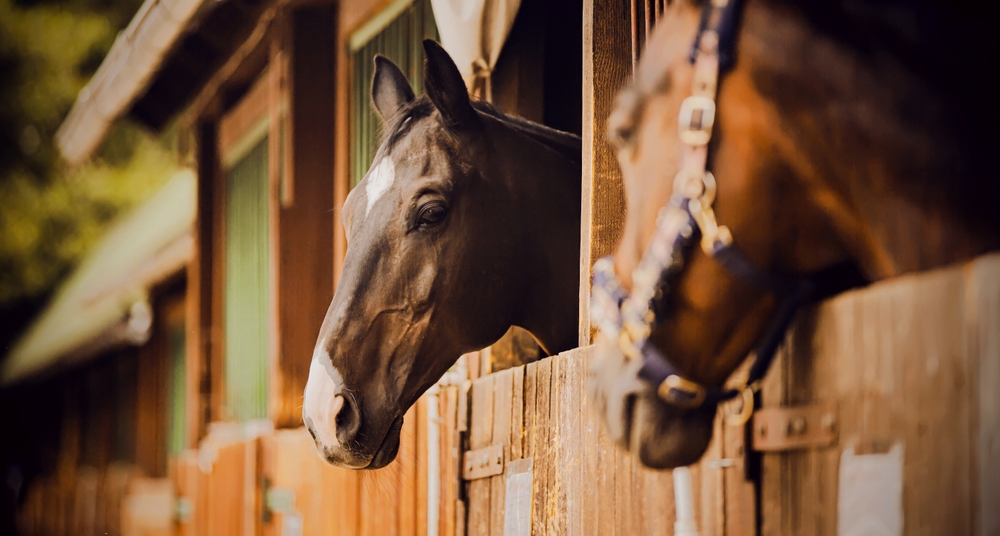
Horses are known for their strong social bonds, and they can show profound signs of mourning when they lose a companion. Changes in behavior, such as listlessness or a lack of interest in food, can indicate that a horse is grieving. Horses may stand near the body of a deceased friend, seemingly paying their respects. This behavior suggests that horses experience a form of grief and an understanding of loss and connection. It highlights the depth of their emotional lives and the bonds they form with others.
Mourning in horses underscores the importance of social ties and the impact of loss in their communities. It’s a reminder that animals, like humans, have complex emotional landscapes and can experience sorrow. Understanding this aspect of their behavior can help us better care for and support them through difficult times. Horses’ ability to mourn reflects a sense of morality based on empathy and connection. Their capacity for grief challenges us to see them as creatures capable of deep emotional experiences.
